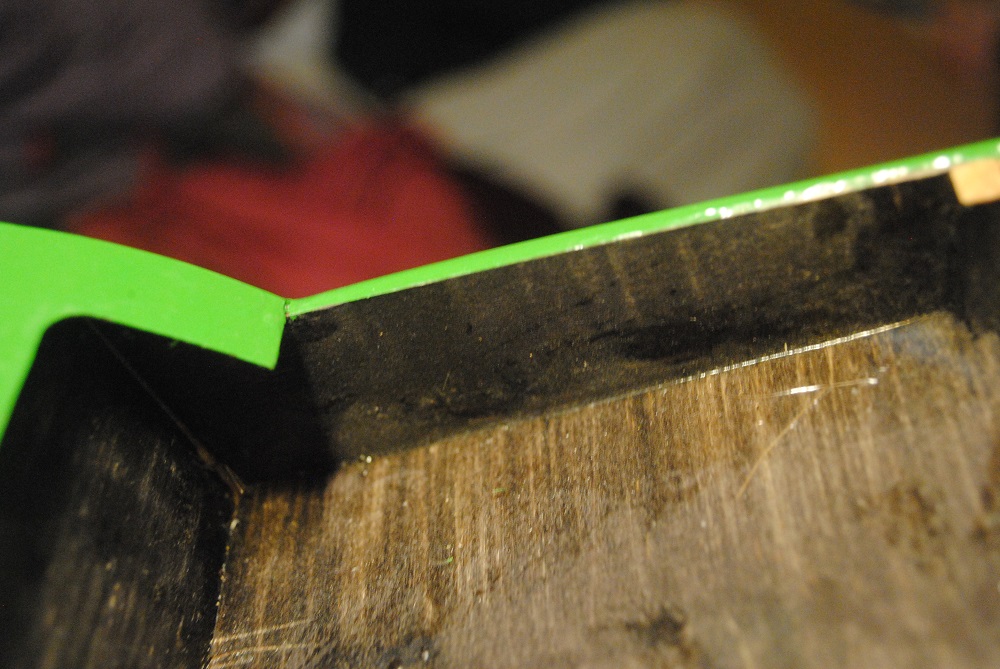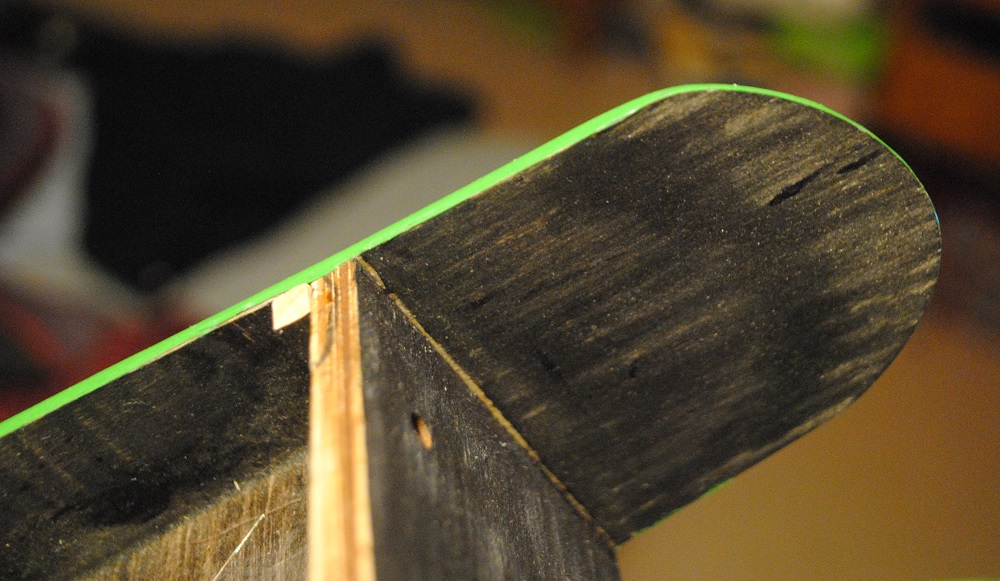I’m pretty sure one of the reasons why some people like electric airplanes is because there is no need to fuel proof them. A glow powered airplane has to have any exposed wood coated with some sort of fuel proof sealant to keep the wood from soaking up oil. Generally this attempt will be less than 100% effective and your airplane will become oil soaked in the long run, but if you do it right you will be able to enjoy the plane for a long time before it becomes totally soaked.
Some commonly used products are epoxy, dope, acrylic dope, polyurethane paint, and polyurethane varnish. Back in the old days I used the no-longer-available Balsarite film adhesive as a fuel proofer. It’s essentially the same thing as Sig Stix-It, which is still available, so you could probably use that.
If you are finishing your plane with dope and fabric, then I will assume that you are too smart for this article. Basically, you just paint the whole plane with dope, including the parts that will be exposed to oil, and put fabric on the parts that need it, and you’re finished. Congratulations.
If you are covering with Monokote or some other iron-on film, you will need to answer a very important question: “Do you fuel proof the uncovered engine compartment before or after applying the Monokote to the rest of the plane?” That’s a good question, and I’m glad you asked. If you’re going to use Stix-It, then you should apply it first. Put it on the engine compartment and any other areas that will be covered in oil but not film. Extend the stuff 1/4 to 1/2 inch onto the areas that will receive film. Then when you apply the film, the edges of it will be stuck firmly to the wood around the engine compartment, and the Stix-it will ooze up into any wrinkles in the film so oil will not be able to seep under the edges. Unfortunately there is a disadvantage to this method. If you like to heat your film with a heat gun and pull it around the edges of the airplane’s nose to get a smooth curve and a nice edge, the Stix-It will allow the film to pull back and wrinkle when you stop heating and stretching it. So you’ll have to hold it while it cools before letting it go. This is going to slow you down as you stretch film around the entire nose section of the plane. It’s a nice method of fuel proofing, though, so give it a whirl if you are in the mood to try things for yourself.
The other way to do it is to leave the wood untreated and cover the entire thing with film, and then apply your fuel proof coating to the engine bay. This is what I typically do, so I took some photos of my current project, a Corkscrew. As you can see in the photos I colored the engine and tank area with a black Sharpie marker. This is a great way to paint something black without buying any black paint. Then I covered the whole plane with Monokote, pulling the edge and stretching it tightly around the engine cowl cheeks. I cut the Monokote edges off, but I didn’t go out of my way to cut them absolutely flush with the wood because I didn’t want to cut slivers off of the wood. The Monokote doesn’t stick out much, but let’s just say that if you felt the inside of the cowl or the bottom of the firewall with your finger you would feel a little Monokote ridge sticking out. This helps to trap a tiny fillet of epoxy when you brush it on. Here’s what it looks like.
I hope you can see how the edge comes right over the edge of the plane, so the epoxy will seep into the cracks when I paint it on. Now I’m ready for some epoxy. I bought this at the hardware store, and it came with a tiny popsicle stick. Isn’t that cute? I wonder what they think I’ll do when I mix the rest of the epoxy.
I add a few drops of denatured alcohol to my epoxy. In this case I would add an amount that would be about the size of a raisin if I could gather it into that shape, if that makes sense to you. Thinning the epoxy retards the cure a little bit, and it makes it more paintable, and it allows the epoxy to seep into the wood and under the edges of the Monokote more easily. If you thin your epoxy with alcohol, do not use bathroom alcohol because it has a ton of water in it. Don’t even use the super duper 90% isopropyl alcohol because that’s still too much water. Get the stuff from the hardware store.
I always paint around the edges first, moving the brush toward the Monokote edge. Think of it like scraping mud off of your boots on the edge of the porch. The inside of the cowl cheek is the top of the porch, so scrape some epoxy off the brush into the edge where the Monokote comes up to this surface. Then brush the excess off and apply it to the rest of this piece, then do the same for all the other edges. If you have end grain exposed anywhere, as I do on the vertical corner sticks on my plane, paint it a few times as the epoxy soaks in.
 As you can see in the above photo, I need to make sure to paint the back side of the wind screen because you can be sure that oil will get in there. Also, pay attention to little seams like where the wind screen meets the fuselage side. Oil will go into that crack, so make sure to dab a gob of goo on there so it will soak in and seal the seam. On this plane there are similar tiny seams at the bottom of the firewall, on each side.
As you can see in the above photo, I need to make sure to paint the back side of the wind screen because you can be sure that oil will get in there. Also, pay attention to little seams like where the wind screen meets the fuselage side. Oil will go into that crack, so make sure to dab a gob of goo on there so it will soak in and seal the seam. On this plane there are similar tiny seams at the bottom of the firewall, on each side.
Here’s what it looks like after everything is painted with thinned epoxy, and the end grain has been repainted twice.
Notice that I don’t really care if a little bit of goo comes over the edge and gets on the Monokote. Maybe it’s not pretty, but this is an article about fuel proofing, not contest winning detail work.
It should be noted that this method can also be used with other products, such as polyurethane varnish. I fuel proofed a plane last month with Minwax polyurethane. It works, but multiple coats are required because it has a much thinner consistency than epoxy. Also, because it’s thin it tends to run and drip after you walk away to let it dry. I’ve also used Pactra Formula U hobby paint, which is no longer available. Pactra was nice because it was full bodied unlike runny Minwax varnish, but not gooey like epoxy. If you find another brand of polyurethane hobby paint you would probably find it convenient to use, so go ahead and make a test panel to see if it’s fuel proof. If you do, let me know.



